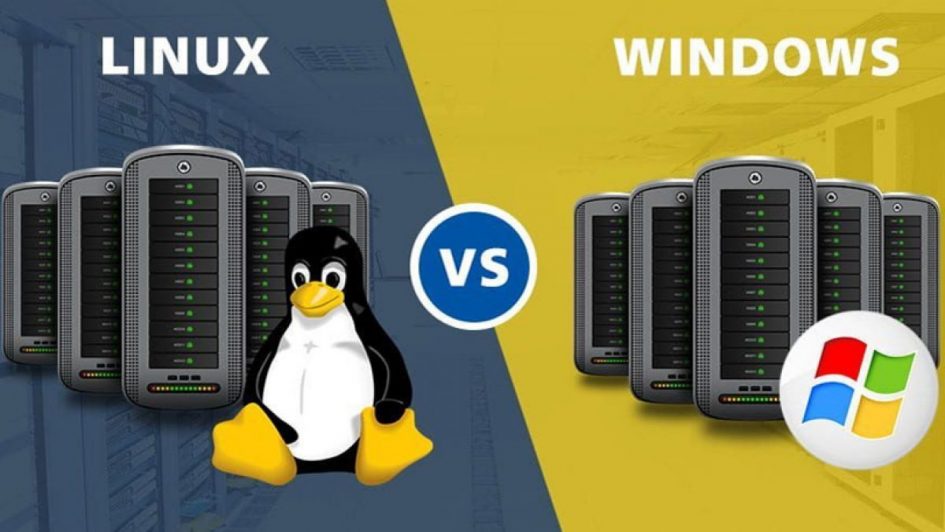Choosing between a Windows and a Linux virtual server can be a challenging decision, especially if you’re unfamiliar with the strengths and weaknesses of each operating system. This article aims to provide a detailed comparison, helping you understand the nuances of each option to make an informed choice.
Server Characteristics: Windows vs. Linux
Virtual servers are defined by their operating systems, which dictate their performance, compatibility, and user experience. Let’s break down the core characteristics of both Windows and Linux virtual servers.
Windows Virtual Servers:
- Ease of Use: Windows servers are known for their user-friendly graphical user interface (GUI). If you’re used to working with Windows on your personal computer, the transition to managing a Windows server will be smoother.
- Software Compatibility: They offer seamless integration with Microsoft products like Exchange, SharePoint, and ASP.NET, making them ideal for businesses reliant on these tools.
- Support and Updates: Windows servers benefit from extensive support and regular updates from Microsoft, ensuring that you have access to the latest features and security patches.
Linux Virtual Servers:
- Performance and Uptime: Linux servers are renowned for their high performance and reliability. They can run for extended periods without the need for reboots, which is crucial for maintaining consistent uptime.
- Customization: With Linux, you have the freedom to customize almost every aspect of the server, from the kernel to the installed software packages. This makes it a favorite among developers and tech enthusiasts.
- Security: Linux is considered more secure due to its open-source nature. Vulnerabilities are quickly identified and patched by the community, reducing the risk of exploits.
Consider this situation: if you are developing a web application that relies heavily on Microsoft technologies, a Windows server might be the better choice. On the other hand, for a project that requires a high degree of customization and robustness, a Linux server would be more appropriate.
Cost Analysis
The cost of a virtual server can significantly impact your decision, especially for long-term projects. Let’s compare the costs associated with Windows and Linux virtual servers.
Windows Virtual Servers:
- Licensing Costs: Windows requires a paid license, which can increase the overall cost of your server. For instance, a basic Windows VPS might cost between $20 and $40 per month, while more advanced configurations can reach $100 or more.
- Additional Software Fees: Often, additional software and tools also require separate licenses, adding to the total cost.
Linux Virtual Servers:
- Free Licensing: Linux is open-source, meaning there are no licensing fees. A basic Linux VPS can start as low as $5 to $15 per month, with high-end configurations priced around $50 or more.
- Lower Overall Costs: The absence of licensing fees makes Linux servers more affordable, particularly for startups and small businesses.
For instance, if you are running a personal blog or a small business website, a Linux VPS would be a cost-effective solution. However, if your project relies heavily on Microsoft software, the additional costs for a Windows server might be justified.
Top 3 Reasons to Choose Linux Over Windows
- Cost Efficiency: Linux servers do not require expensive licenses, making them a more economical choice for many users.
- Enhanced Security: The open-source nature of Linux allows for quick identification and patching of vulnerabilities, enhancing overall security.
- Customization: Linux offers unparalleled flexibility and customization options, allowing you to tailor the server to meet your specific needs.
However, Linux servers also have some disadvantages:
- Complexity: Managing a Linux server requires familiarity with the command-line interface (CLI) and server administration.
- Software Compatibility: Some proprietary software and applications are designed exclusively for Windows, necessitating workarounds or alternatives on Linux.
- Support: While Linux has a robust community for support, it may lack the formalized support structure provided by Microsoft.
Required Knowledge for Linux VPS Management
To effectively manage a Linux VPS, you need a certain level of technical expertise, including:
- Command-Line Proficiency: Knowing how to use the command-line interface is essential for server management.
- Server Administration Skills: Understanding server setup, configuration, and maintenance is crucial.
- Security Awareness: Implementing security measures such as firewalls, regular updates, and secure user management practices.
For example, if you plan to host a complex e-commerce platform, you’ll need to ensure your server is properly configured, secured, and maintained to handle high traffic and sensitive customer data.
Comparison of Windows and Linux Virtual Servers
Virtual servers on Windows and Linux each have their unique advantages and disadvantages.
Windows Virtual Server:
- Interface: Offers a user-friendly graphical user interface (GUI), making server management easier.
- Compatibility: Supports a wide range of software, especially enterprise applications like Microsoft SQL Server and Exchange Server.
- Support: Comes with official support from Microsoft, ensuring regular updates and security patches.
Linux Virtual Server:
- Cost: Most Linux distributions are free, reducing overall server costs.
- Customization: Provides high flexibility in configuring and optimizing the system to meet specific needs.
- Security: Considered more secure due to open-source code and an active developer community that quickly addresses vulnerabilities.
Conclusion: The choice between Windows and Linux virtual servers depends on the user’s specific needs. Windows is suitable for those requiring compatibility with enterprise software and a user-friendly GUI, while Linux is a better choice for those seeking a cost-effective solution with high customization and security.

Залишити відповідь